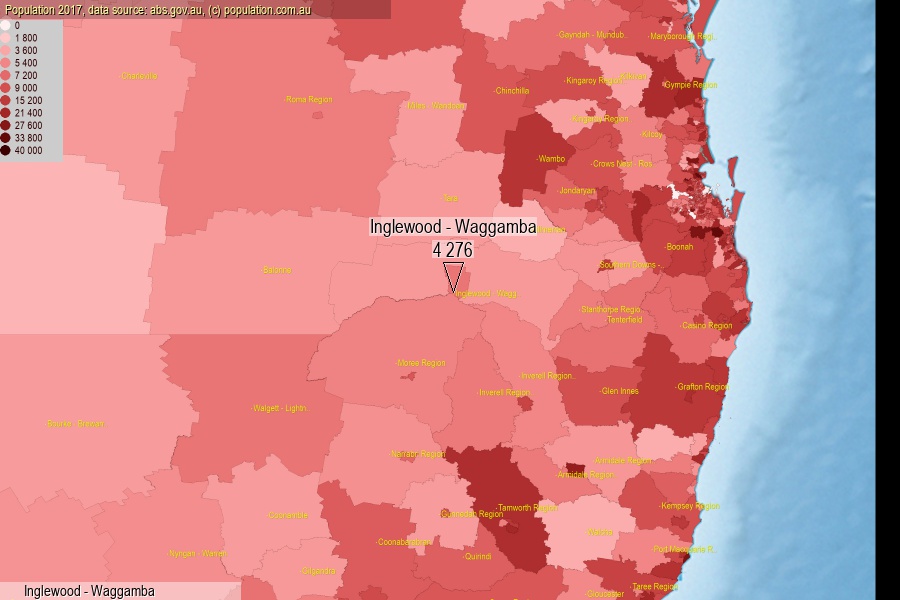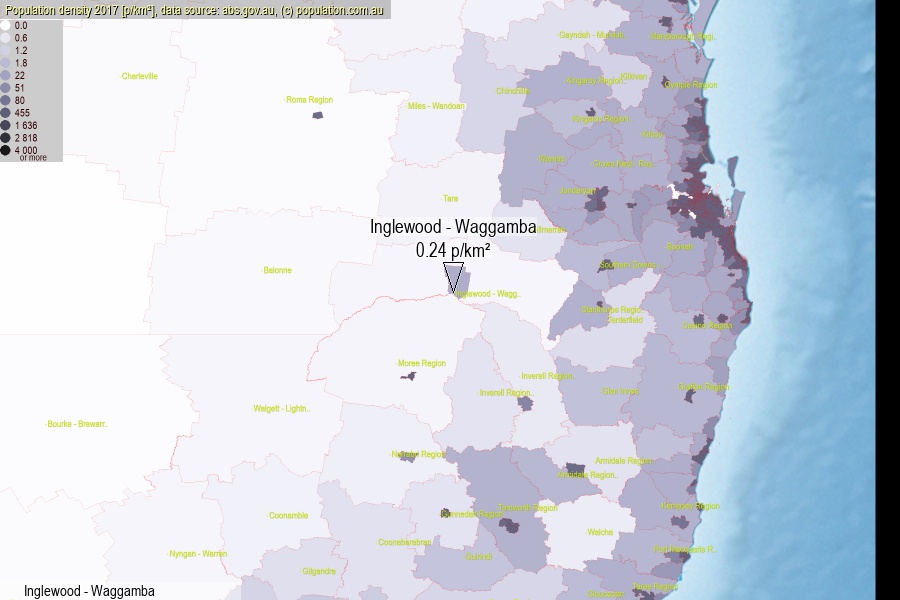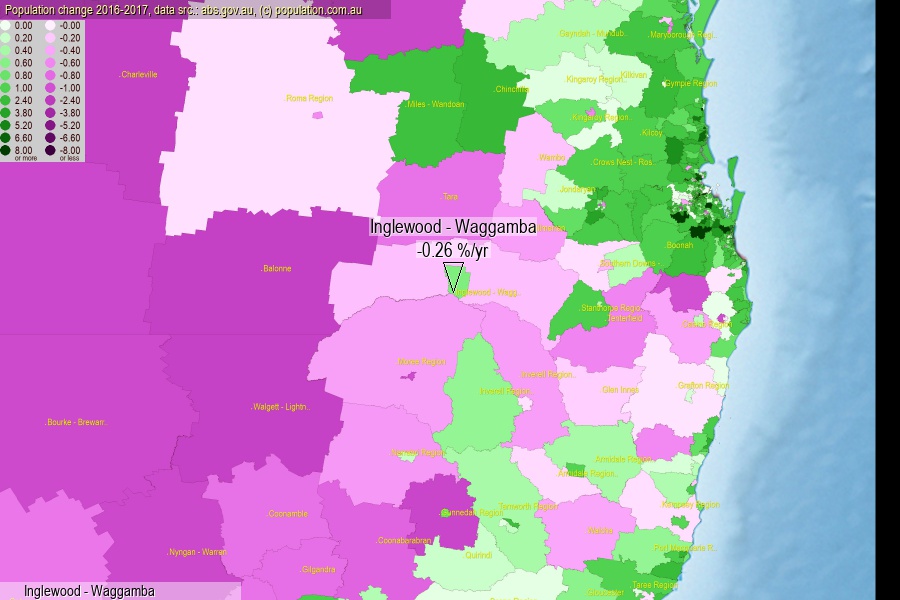 population.com.au
population.com.auLast official estimated population of Inglewood - Waggamba (as Statistical Area Level 2) was 4 276 people (on 2017-06-30)[2]. This was 0.02% of total Australian population and 0.086% of QLD population. Area of Inglewood - Waggamba is 17 515.60 km², in this year population density was 0.24 p/km² . If population growth rate would be same as in period 2016-2017 (-0.26%/yr), Inglewood - Waggamba population in 2025 would be 4 189. [0]



Click to enlarge. Inglewood - Waggamba is located in the center of the images.
Population [people], population density [p./km²] and population change [%/year] [2]
View borders » (new window) [4]
[1991-1992] -0.69 %/Yr.
[1992-1993] -0.82 %/Yr.
[1993-1994] -2.46 %/Yr.
[1994-1995] -2.56 %/Yr.
[1995-1996] -2.13 %/Yr.
[1996-1997] -0.96 %/Yr.
[1997-1998] -0.12 %/Yr.
[1998-1999] +1.09 %/Yr.
[1999-2000] +0.40 %/Yr.
[2000-2001] +0.74 %/Yr.
[2001-2002] -0.99 %/Yr.
[2002-2003] -0.21 %/Yr.
[2003-2004] -2.36 %/Yr.
[2004-2005] -0.96 %/Yr.
[2005-2006] -0.22 %/Yr.
[2006-2007] +0.65 %/Yr.
[2007-2008] +0.89 %/Yr.
[2008-2009] +0.74 %/Yr.
[2009-2010] +0.71 %/Yr.
[2010-2011] +0.56 %/Yr.
[2011-2012] +0.82 %/Yr.
[2012-2013] +0.51 %/Yr.
[2013-2014] -0.78 %/Yr.
[2014-2015] -0.40 %/Yr.
[2015-2016] +0.14 %/Yr.
[2016-2017] -0.26 %/Yr.
[0] Calculated with linear interpolation from officially estimated population
[1] Read more about SA2 and Australian Statistical Geography Standard (ASGS) on abs.gov.au
[2] Population data from Australian Bureau of Statistics (Population and density: 2017; change: 2016-2017)
[3] Digital Boundaries: Australian Statistical Geography Standard (ASGS) 2016.
[4] Border coordinates are simplifyed using Ramer-Douglas-Peucker algorithm.